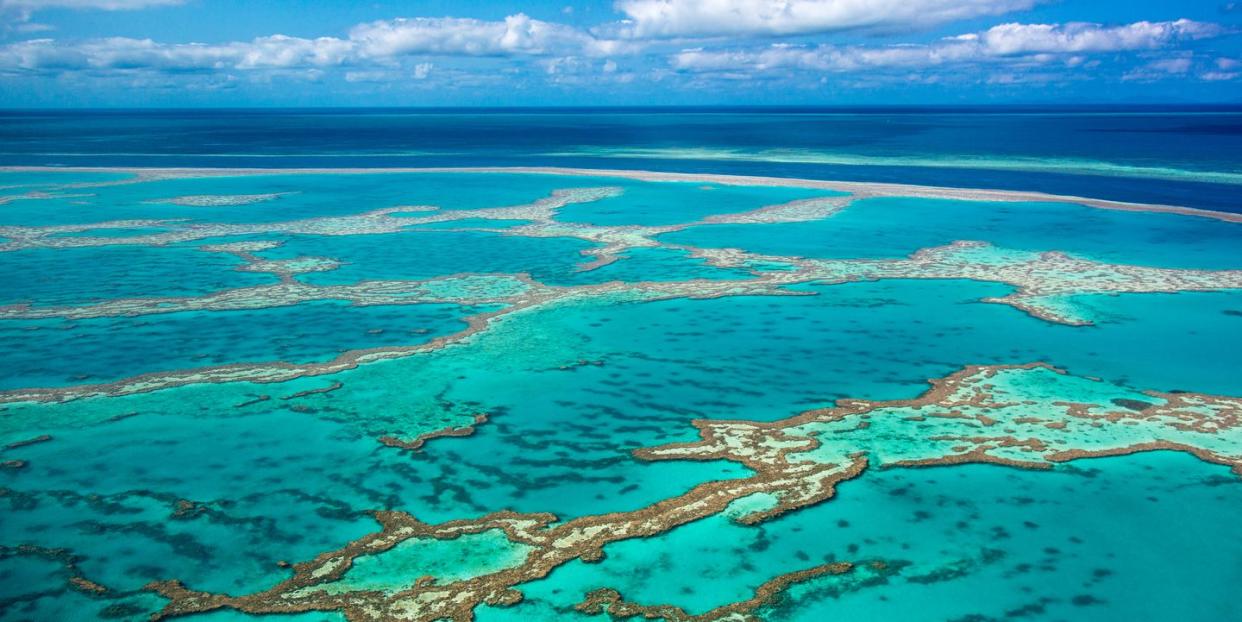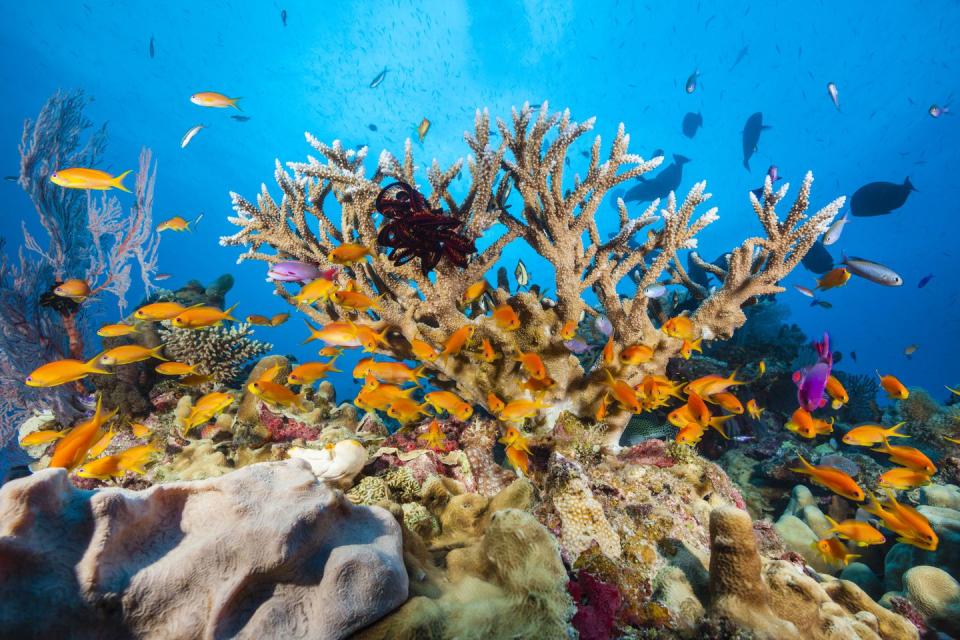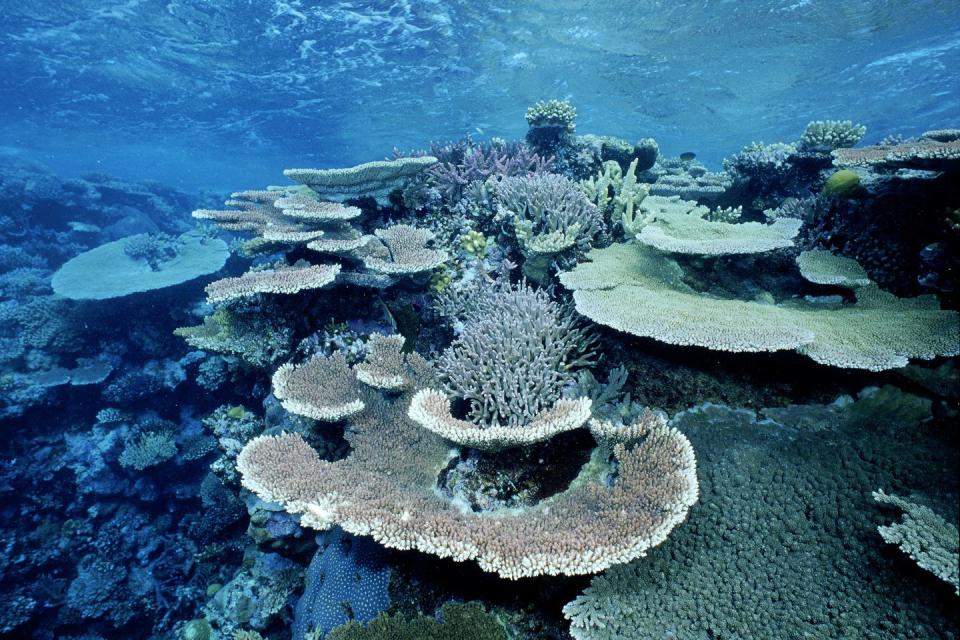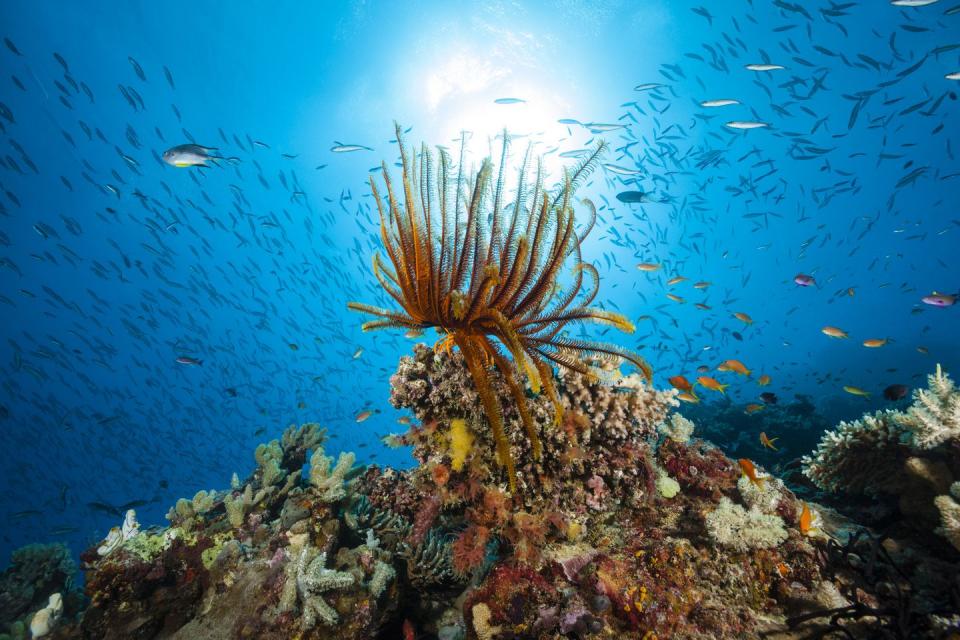How Things Got So Bad for the Great Barrier Reef

A Carnival Cruise Line ship accidentally spilling more than 7,000 gallons of wastewater in the waters of the Great Barrier Reef is a catastrophic event by any measure, but if you consider the full picture of human toll on this fragile ecosystem, it's tragically unexceptional: A recent study found that half the corals in the reef had died over the last two years. Another found that the reef will likely disappear completely over the next few decades.
So how are humans destroying such a sprawling natural feature? And is it already too late to save it?
Threats From All Sides

The Great Barrier Reef has been around in some form for nearly half a million years, but its modern incarnation has existed for about eight millennia. Sea levels rose substantially at the end of the last ice age, allowing the reef to grow much larger than ever before and reach its current expanse. Today, the reef stretches for nearly 1,500 miles along the coast of Australia and is home to more than 2,000 animal species. It’s so large that it’s visible from space.
As one of the world's most famously beautiful and relatively accessible attractions, the Great Barrier Reef attracts millions of visitors every year. That's the first part of the problem. The serious tourist traffic leads to disasters like the accidental wastewater spill in August, as well as unexpected problems such as people's sunscreen depositing on corals and blocking the sunshine they require.
But the reef faces threats beyond a glut of tourists. In 2014, the Great Barrier Reef Marine Park Authority released a long-term plan to protect the reef until at least 2050, identifying four major threats to the reef ecosystem: climate change, ocean pollution and runoff, changes in coastal land use, and overfishing.
In the years since that report was released, the Marine Park Authority and the Australian government have made steps to fix most of those problems. Farms and agricultural regions have dramatically lowered pesticide and fertilizer use and ocean runoff, decreasing pollution. Ports have stopped dumping waste into the ocean. Future commercial development projects must meet more strict standards before they begin construction. And reef animals now have additional legal protections against poaching and overfishing.
But the biggest threats to the reef come from the biggest threat to the earth: climate change.
The Climate Effect

Warming ocean temperatures can cause what is known as coral bleaching, when the corals in the reef lose their color and turn white. The coral’s distinctive colors come from symbiotic algae that live inside the coral structure. Higher ocean temperatures kill them. With the algae gone, the corals lose an important food source, making them weak and susceptible to disease and starvation. In recent years, high temperatures have led to severe coral bleaching across more than half of the reef.
In addition, climate change can cause ocean acidification, which also takes a toll on reefs. The oceans can absorb carbon dioxide, pulling it out of the atmosphere. That sounds like good news, since we desperately need to pull CO2 out of the atmosphere, but this makes the oceans more acidic in the process. That additional acidity can leach calcium from the corals, making them brittle and unable to grow. The result is something like coral osteoporosis.

The Australian government’s plan makes almost no mention of climate change, and even if it did, climate change is a global issue that Australia’s Marine Park Authority cannot fix. The uncomfortable truth is that Australia could prevent all pollution and fishing activities that impact the reef and the corals could still die nonetheless.
Doomed Already?
A study published in Nature Climate Change last year found that even small amounts of warming-the kind we’re already experiencing, and will continue to experience for decades at least-is probably enough to destroy the entire Great Barrier Reef. Even in the most optimistic of scenarios predicted by climate scientists, the Great Barrier Reef will probably suffer a severe bleaching event once every year or two. At that point, it will only be a matter of time before all the corals die off completely.
Tragically, it may be too late to save the Great Barrier Reef-even with a worldwide Hail Mary to get climate change under control. The most realistic goal of the Australian government’s 45-year plan is: Keep the reef alive as long as possible.
('You Might Also Like',)

